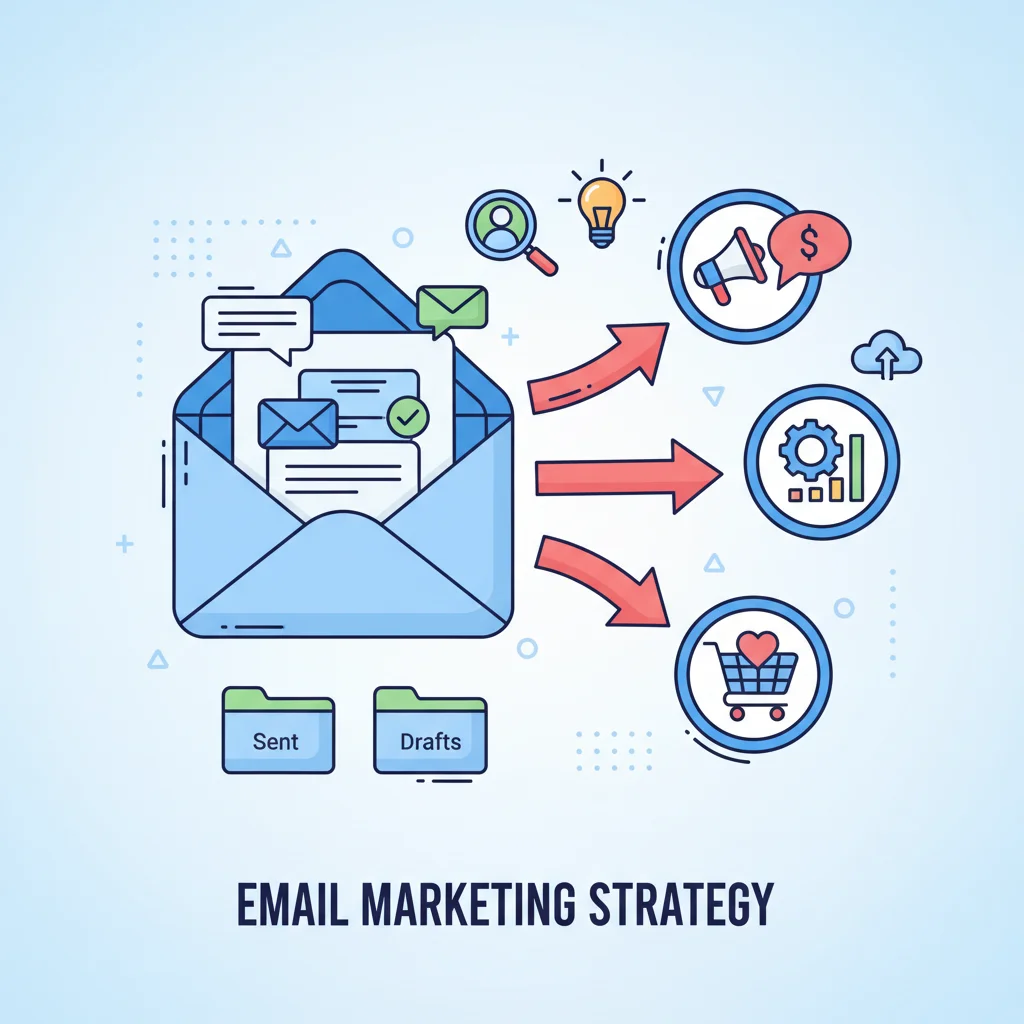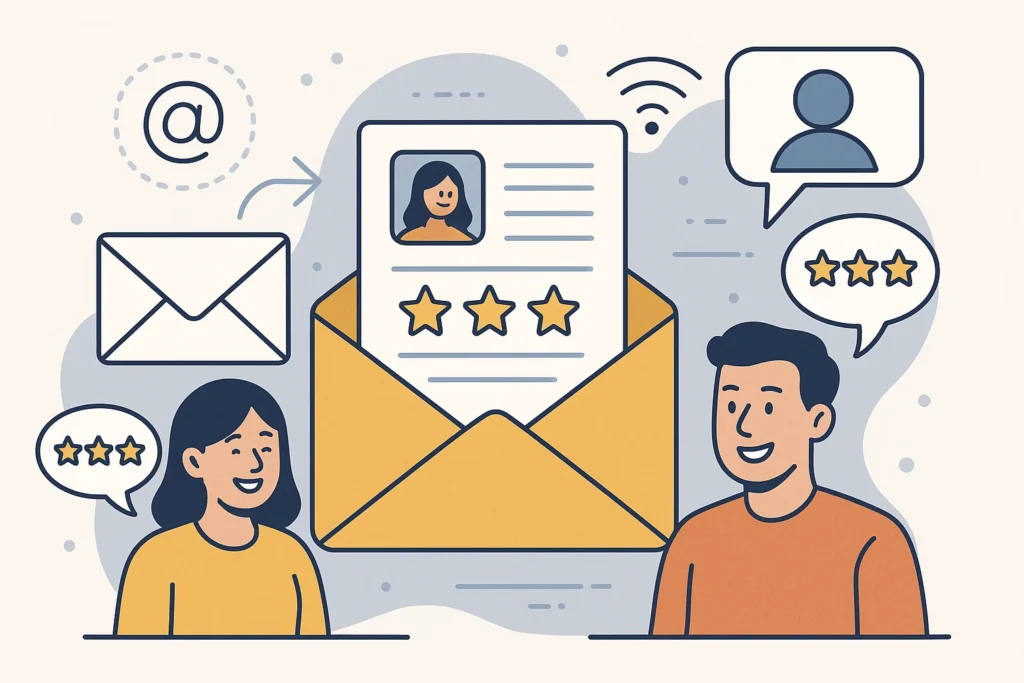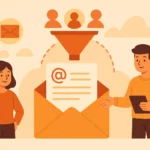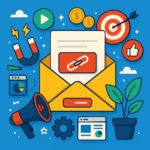Now Reading: Build Your Effective Healthcare Email Campaign in 5 Steps
-
01
Build Your Effective Healthcare Email Campaign in 5 Steps
Build Your Effective Healthcare Email Campaign in 5 Steps
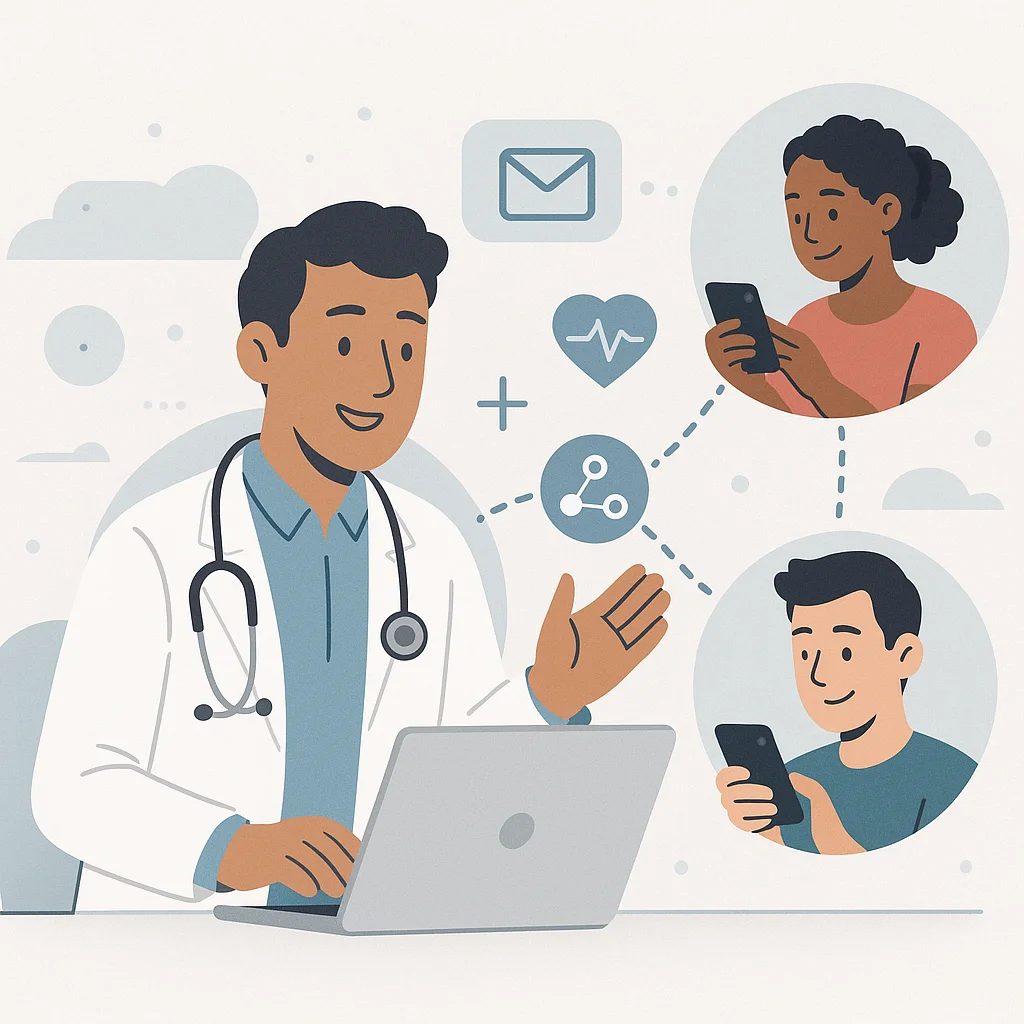
Your inbox is probably overflowing with promotional emails right now, and I bet most of them go straight to trash. That’s exactly what’s happening to your patients too – they’re drowning in generic healthcare emails that feel more like spam than genuine care. But here’s the thing: when done right, an effective healthcare email campaign can transform how you connect with patients, boost appointment bookings, and build the kind of trust that keeps people coming back to your practice.
Key Takeaways
Creating an effective email marketing campaign for healthcare requires a strategic approach that balances patient engagement with regulatory compliance. Here’s what you need to know:
- Start with HIPAA compliance – Always obtain explicit consent and avoid including protected health information in emails
- Segment your audience by demographics, health conditions, visit history, and engagement levels for targeted messaging
- Use clear, jargon-free language and keep emails concise since patients are busy and often check emails on mobile devices
- Include compelling subject lines that avoid spam triggers while creating urgency or curiosity
- Provide multiple email types including appointment reminders, educational content, promotional offers, and newsletters
- Always include clear calls-to-action that guide patients toward booking appointments or accessing resources
- Optimize for mobile devices since 41% of email views happen on smartphones and tablets
- Monitor key metrics like open rates (37.77% average for healthcare) and click rates (0.88% average) to improve performance
Building Your Foundation
Understanding HIPAA Compliance
Before we dive into the fun stuff, let’s talk about the elephant in the room – HIPAA compliance. This isn’t just legal mumbo jumbo; it’s the foundation that keeps your practice safe and your patients’ trust intact.
When building your effective healthcare email campaign, you’ll need to obtain explicit consent from patients before adding them to your email list. This means using secure opt-in forms on your website that clearly explain how you’ll use their information. Include a privacy policy that’s actually readable (not written in lawyer-speak), and make it super easy for patients to unsubscribe.
Here’s the golden rule: never include electronic protected health information (ePHI) in your email content. If you absolutely must send sensitive files, encrypt them manually and include a privacy statement at the bottom of your emails.
Audience Segmentation Strategies
Not all patients are created equal, and your emails shouldn’t treat them that way either. Audience segmentation is where the magic happens in healthcare email marketing.
You can segment your audience based on:
- Demographics – age, gender, location, education level
- Health conditions – chronic illnesses, mental health needs, preventive care
- Visit history – new patients, regular check-ups, emergency visits
- Engagement levels – active subscribers, inactive patients, frequent openers
For example, if you’re a family practice, you might create separate segments for parents with young children, seniors needing regular monitoring, and young adults focused on preventive care. Each group gets content that speaks directly to their needs and concerns.
Choosing The Right Email Platform
Your email platform needs to be more than just a way to send messages – it should be HIPAA-compliant and offer robust segmentation features. Look for platforms that provide:
- Secure data handling and encryption
- Advanced segmentation capabilities
- Mobile-responsive templates
- Detailed analytics and reporting
- Integration with your practice management system
Useful Articles:
Content Strategy That Converts
Appointment Reminders That Actually Work
Let’s start with the bread and butter of healthcare email marketing – appointment reminders. But we’re not talking about boring, generic reminders that patients ignore. We’re creating reminders that reduce no-shows and make patients feel valued.
Here’s a template that works:
Subject: Tomorrow's the day, [Patient Name]!
Hi [Patient Name],
Just a friendly heads-up that you've got an appointment with Dr. [Doctor Name] tomorrow at [Time].
Here's what to bring:
* Your insurance card
* List of current medications
* Any questions you want to ask
Running late? No worries – just give us a quick call at [Phone Number].
Looking forward to seeing you!
The [Practice Name] Team
P.S. Need to reschedule? Click here [Link] or call us.This template works because it’s personal, helpful, and removes friction. It tells patients exactly what they need to know without making them work for the information.
Educational Content That Builds Trust
Patient education emails are your opportunity to show that you genuinely care about your patients’ wellbeing beyond their appointments. These emails position you as a trusted healthcare partner, not just a service provider.
Educational emails should:
- Address common patient concerns
- Use simple, jargon-free language
- Include actionable tips patients can implement immediately
- Link to credible sources for additional information
Here’s an educational email template:
Subject: 3 simple ways to boost your immune system this season
Hi [Patient Name],
With cold season approaching, I wanted to share some simple strategies to keep your immune system strong:
1. Get 7-9 hours of quality sleep
Your body repairs and strengthens itself during sleep. Try setting a consistent bedtime routine.
2. Stay hydrated with water (not just coffee!)
Aim for 8 glasses of water daily. Your immune cells need proper hydration to function.
3. Move your body for 30 minutes daily
Even a brisk walk counts. Exercise increases infection-fighting cells.
Want to learn more? Check out our latest blog post [Link].
Stay healthy,
Dr. [Name]
Questions? Reply to this email – I read every one.Promotional Emails That Don’t Feel Pushy
Promotional healthcare emails can feel awkward if you’re not careful. The key is focusing on patient benefits rather than practice revenue. Frame your promotions as opportunities for patients to prioritize their health.
Subject: Last chance for discounted flu shots
Hi [Patient Name],
Flu season is right around the corner, and I don't want you to get caught unprepared.
This week only, we're offering flu shots for $25 (regularly $40) because I believe everyone deserves affordable preventive care.
Why get your flu shot?
* Reduces your risk of getting the flu by 40-60%
* Protects your family and community
* Takes less than 10 minutes
Book your appointment: [Link]
Or call us: [Phone Number]
Available times:
* Monday-Friday: 9am-5pm
* Saturday: 9am-2pm
Stay protected,
The [Practice Name] TeamNewsletter Content That Patients Actually Read
Healthcare newsletters are perfect for staying top-of-mind with patients between appointments. But nobody wants to read a novel in their inbox. Keep newsletters scannable, valuable, and engaging.
Your newsletter should include:
- Seasonal health tips
- Practice updates and new services
- Staff spotlights to humanize your practice
- Community health events
- Quick health facts or myth-busters
Subject: Your monthly dose of health tips
Hi [Patient Name],
Here's what's happening at [Practice Name] this month:
🍂 SEASONAL TIP
Fall allergies acting up? Try rinsing your nasal passages with saline solution twice daily.
👩⚕️ MEET THE TEAM
Say hello to Sarah, our new nurse practitioner! She specializes in women's health and is accepting new patients.
📅 UPCOMING EVENTS
Free blood pressure screenings at the community center on October 15th. We'll be there from 10am-2pm.
💡 HEALTH MYTH BUSTER
Myth: You can't exercise with a cold.
Truth: Light exercise is usually fine if symptoms are above the neck.
Need an appointment? Book online [Link] or call [Phone Number].
Stay well,
The [Practice Name] TeamAdvanced Email Strategies
Personalization Beyond First Names
Real email personalization goes way beyond slapping someone’s first name in the subject line. It’s about creating content that feels specifically crafted for each patient’s situation and needs.
Advanced personalization includes:
- Behavioral triggers – sending specific emails based on patient actions
- Health condition targeting – tailored content for diabetes patients, heart disease patients, etc.
- Appointment history – different messaging for new vs. returning patients
- Demographic considerations – age-appropriate content and communication styles
For instance, a reminder email for a 70-year-old patient might include larger fonts and simpler language, while an email to a 30-year-old might be more casual and include links to your mobile app.
Automated Email Sequences
Email automation is your best friend when you’re trying to provide consistent patient communication without burning out your staff. Set up automated sequences for common scenarios:
New Patient Welcome Series:
- Email 1: Welcome and what to expect
- Email 2: How to prepare for your first visit
- Email 3: Introduction to your online patient portal
- Email 4: Educational content relevant to their chief complaint
Post-Appointment Follow-up:
- Email 1: Thank you and appointment summary (24 hours later)
- Email 2: Educational resources related to their visit (3 days later)
- Email 3: Reminder to schedule follow-up if needed (1 week later)
Mobile Optimization Essentials
With 41% of email views happening on mobile devices, your mobile optimization can make or break your campaign success. Mobile-friendly emails aren’t just smaller versions of desktop emails – they require different thinking.
Mobile optimization checklist:
- Subject lines under 30 characters for full visibility
- Single-column layouts that stack vertically
- Large, tappable buttons (minimum 44px height)
- Scannable content with plenty of white space
- Fast-loading images or text alternatives
Test every email on multiple devices before sending. What looks perfect on your computer might be unreadable on a smartphone.
Subject Line Psychology
Your subject line is the gatekeeper to your entire email. It determines whether patients open your message or send it straight to the trash. Healthcare subject lines need to balance professionalism with curiosity.
Effective healthcare subject line formulas:
- Benefit-focused: “3 ways to reduce your back pain naturally”
- Urgency without panic: “Flu shot reminder – limited appointments available”
- Personal: “[Name], your test results are ready”
- Question-based: “Struggling with sleep? Here’s what might help”
- Seasonal relevance: “Spring allergies got you down?”
Avoid these subject line killers:
- ALL CAPS (screams spam)
- Excessive punctuation (!!!)
- Generic phrases like “Newsletter” or “Update”
- Medical jargon that patients won’t understand
Useful Articles:
Email Types That Drive Results
Follow-up Sequences for Different Scenarios
Follow-up emails are where you can really show patients that you care about their ongoing health, not just their appointment revenue. Different situations call for different follow-up approaches.
Post-Surgery Follow-up:
Subject: How are you feeling, [Patient Name]?
Hi [Patient Name],
It's been a week since your procedure, and I wanted to check in on your recovery.
How are you feeling? Any concerns or questions?
Here are some things to watch for:
* [Specific symptoms to monitor]
* [Normal vs. concerning signs]
* [When to call our office]
Your next appointment is scheduled for [Date]. If you need to reach us before then, call [Number].
Wishing you a smooth recovery,
Dr. [Name]Missed Appointment Follow-up:
Subject: We missed you yesterday, [Patient Name]
Hi [Patient Name],
I noticed you weren't able to make it to your appointment yesterday. Life happens – I totally get it!
If you need to reschedule, here are some available times:
* [List 3-4 specific options]
If transportation or scheduling is an issue, let me know. We might be able to help with:
* Telehealth appointments
* Extended hours
* Transportation resources
Your health matters to us.
[Practice Name] TeamSeasonal Health Campaigns
Seasonal email campaigns tap into what patients are already thinking about. They’re timely, relevant, and show that your practice stays current with health trends and concerns.
Winter Wellness Campaign:
- December: Staying healthy during holiday stress
- January: New year, new health habits
- February: Heart health awareness month
- March: Preparing for allergy season
Back-to-School Campaign:
- July: Summer safety tips
- August: School physical reminders
- September: Immunization updates
- October: Mental health check-ins for students
Emergency and Urgent Care Communications
Sometimes you need to communicate urgent information quickly. Emergency communications require a different approach – they need to be clear, actionable, and calm without being alarmist.
Subject: Important health update from [Practice Name]
Dear patients,
We want to keep you informed about [specific health concern/outbreak/policy change].
What you need to know:
* [Key fact 1]
* [Key fact 2]
* [Key fact 3]
What we're doing:
* [Practice response 1]
* [Practice response 2]
What you should do:
* [Patient action 1]
* [Patient action 2]
If you have symptoms or concerns, call us at [Number]. We're here to help.
Stay safe,
Dr. [Name] and the [Practice Name] TeamTechnical Implementation
Email Deliverability Best Practices
Email deliverability determines whether your carefully crafted messages actually reach your patients’ inboxes. Poor deliverability means your effective healthcare email campaign never gets the chance to be effective.
Deliverability factors you can control:
- Sender reputation – use a consistent “from” address
- List hygiene – regularly remove bounced and inactive emails
- Content quality – avoid spam trigger words and excessive links
- Authentication – set up SPF, DKIM, and DMARC records
- Engagement rates – higher opens and clicks improve deliverability
Monitor your bounce rates (should be under 2%) and spam complaint rates (should be under 0.1%). If these numbers creep up, investigate immediately.
A/B Testing for Healthcare Emails
A/B testing takes the guesswork out of email optimization. Test one element at a time to see what resonates with your specific patient population.
Elements worth testing:
- Subject lines – length, tone, personalization
- Send times – morning vs. afternoon, weekdays vs. weekends
- Email length – short and sweet vs. comprehensive
- Call-to-action buttons – color, text, placement
- Sender name – practice name vs. doctor’s name
Start with subject line testing since it has the biggest impact on open rates. Run tests for at least a week to account for different patient schedules and email checking habits.
Integration with Practice Management Systems
Your email platform should integrate seamlessly with your existing practice management system. This integration eliminates manual data entry and ensures your patient information stays current across all platforms.
Look for integrations that allow:
- Automatic patient list updates
- Appointment-triggered email sequences
- Segmentation based on practice management data
- Unified patient communication history
This integration is crucial for maintaining HIPAA compliance and providing personalized patient experiences without overwhelming your staff.
Creating an effective healthcare email campaign isn’t about sending more emails – it’s about sending better ones. When you combine strategic planning, compelling content, and technical best practices, email becomes a powerful tool for building stronger patient relationships and growing your practice. Start with one or two email types, master them, then expand your strategy as you see results.


